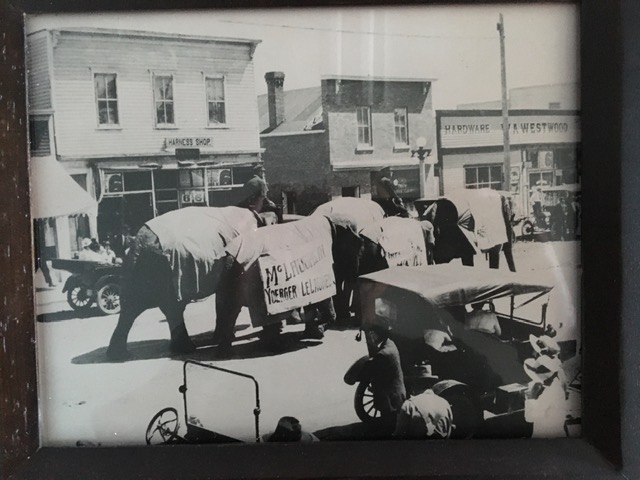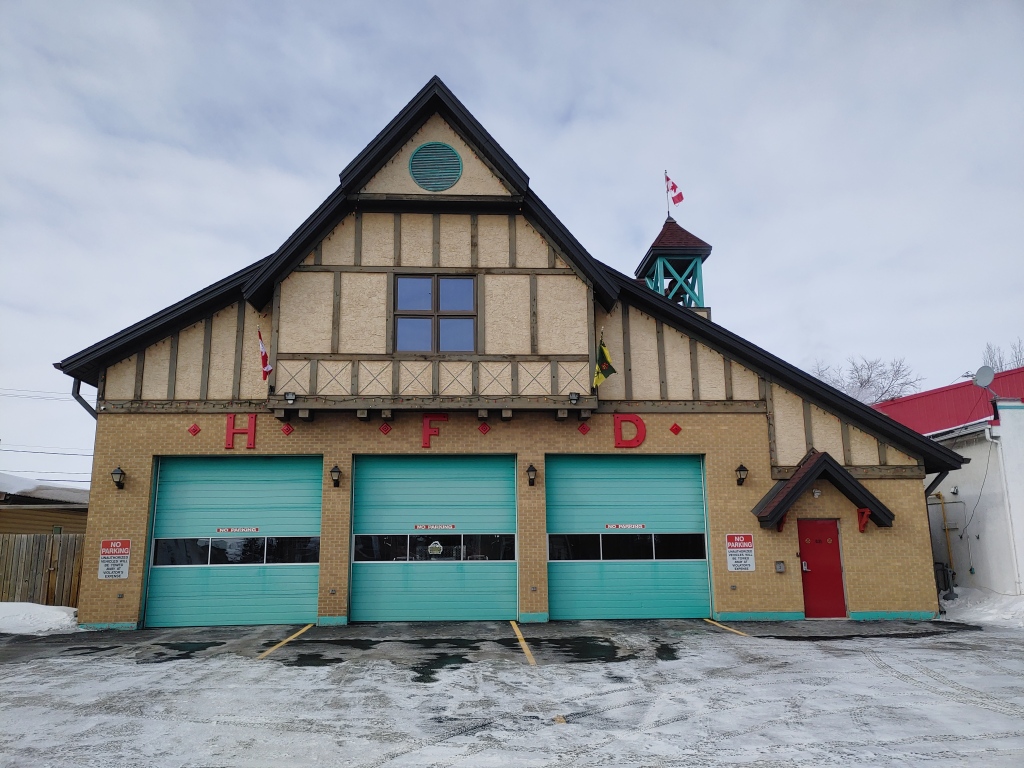
Humboldt, Saskatchwan, Canada
Are you a former member or current member of the Humboldt Fire Department? Or maybe you just have a story or picture about the Humboldt Fire Department? Click here to contact us and help make this record of the history of HFD complete!
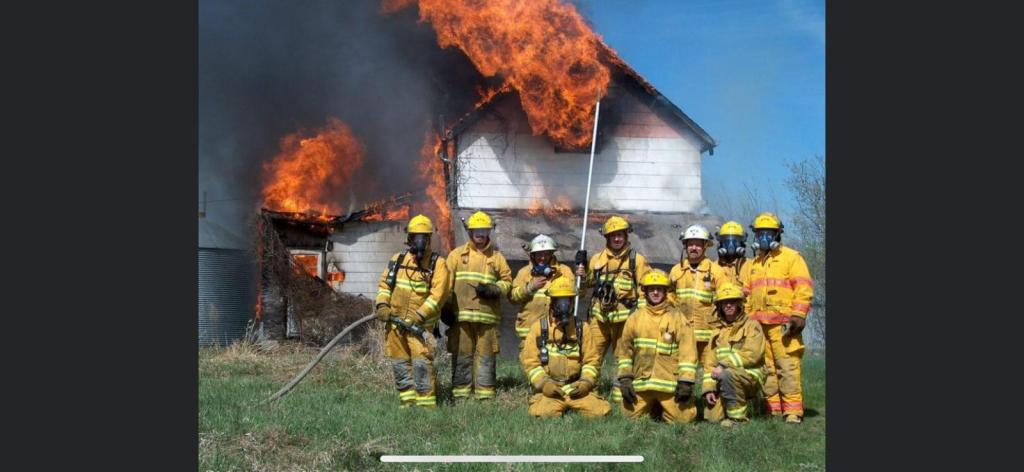
Unmasked member L-R – Craig Stomp, Fire Chief Norbert LeBlanc, Mike Kwasnica, Robert Dufault, Deputy Chief Dale Becker, Neil Buchacher
A message from our Historian…
I was a young boy growing up in St. Benedict back in the mid sixties. I recall listening to the story told by an old fellow that was at the barber shop and pool hall. The story was being told by Mr. Anton Kroll, about his experiences of the Chicago Fire. The Great Chicago Fire which occurred in October of 1871, killing an estimated 300 people and leaving 100,000 people homeless and Mr. Kroll was one of the lucky children that was left being just homeless. I have calculated that he would have been only six years old at the time, but he recalled enough of the events to leave an indelible mark in my mind. Mr. Kroll tragically died in a trailer home fire nearly 95 years after the Chicago Fire at the age of 100. I know that his story sparked my interest in going to work in the fire service.
I hope that this collection will be of equal interest to those who read it.
Joe Dutchak – 2019
Overview of the HFD
Fire Fighting Equipment and Training Apparatus
Historical events around the world:
Throughout the history of mankind, fire was necessary for our survival. We had to learn how to live with fire. Many historic tragic events influenced the way fire departments were developed and the fire codes that were written to prevent those tragedies from occurring again.
The Great Fire of London from September 2, 1666 to September 5, 1666 consumed 13,200 houses, 87 parish churches, St. Paul’s Cathedral and most of the buildings of the city authorities. It is estimated to have destroyed the homes of 70,000 of the city’s 80,000 inhabitants. There were only six confirmed deaths resulting from the fire however many of the poor and middle-class people may not have been reported. This fire resulted in new building construction to be made of brick and stone with good access to the Thames River. These changes are still very obvious when visiting London today.
The Great Chicago Fire of October 8, 1871 that burned for three days killing over 300 people and leaving more than 100,000 people homeless. Almost immediately, the city began to rewrite its fire standards, spurred by the efforts of leading insurance executives. Chicago soon developed one of the country’s leading fire-fighting forces. National Fire Prevention Week is observed in the United States and Canada, during the week (from Sunday to Saturday) in which October the 9 th is included, to commemorate this tragic event and to prompt public awareness.
The Great Toronto Fire of April 19, 1904 started in an industrial and commercial section of the city destroying more than 100 buildings. It caused $10,387,000 in damage and put 5,000 people out of work; at the time the city had 200,000 inhabitants. As a result of the fire, more stringent safety laws were introduced and an expansion of the city’s fire department was undertaken.
The Halifax Harbour Explosion Disaster of December 6, 1917 which killed approximately 2,000 people and injured nearly 9,000 was a simple avoidable accident between two ships in the Halifax Harbour. This was the largest man made explosion in history prior to the use of atomic warfare use in the Second World War in Hiroshima and Nagasaki in Japan. People rushed to their windows to see the fire that was burning in the harbour, then, the explosion occurred. This caused additional deaths and eye injuries as the glass fragments blew into their faces. The many eye injuries resulting from the disaster led to the formation of the Canadian National Institute for the Blind.
9-11 – On Tuesday, September 11th, 2001 when the Islamic terrorist group al-Qaeda, staged a series of four coordinated terrorist attacks on the United States, the attacks killed 2,996 people, injured over 6,000 others and caused at least $10 billion dollars in infrastructure and property damage. This attack changed peoples’ lives world-wide and we are all now aware that it is impossible to be prepared for everything that could happen tomorrow. It is easy to say that we are re-active and should be pro-active but who could have seen this coming?
The people of Humboldt also have seen many disasters that have influenced how we do things. They may not show up on a world scale but the loss of a family members’ life is tragic and has to be weighted on an individual scale. We must stop and think of ourselves in those situations and what that loss of life would mean to us. My old friend fire chief, Leo Lopinski, told me; “I am forever thankful that I never had to tell any of my firefighter’s families that one of the guys had been killed fighting a fire”. It was always on his mind and the tear in his eye told me he realized that could have happened anytime during his appointment as fire chief. Obviously, the paragraph you just read was written before April 6, 2018. The Humboldt Bronco’s fatal bus crash did shake the world. Hopefully, the studies of the crash will result in some reactive actions that will help prevent an accident like this from ever happening again.

Front Row L-R: James Huber, Deputy Chief Francis Kunz, Chief Norbert LeBlanc, Marcel LeBlanc, Matt Schidlowsky
HFD practice burn 2008-2010
Origin of HFD
On April 20, 1906, the people of Humboldt talked about beginning a volunteer fire department after a prairie fire threatened homes of many town residences. In July 1907 at a council meeting they agreed to purchase two lots on Main Street South of the railway tracks for a fire hall. Then in a September meeting they agreed to spend $7,000 for fire protection. The purchase included a 25 horsepower gasoline engine, ladders, and hose. Humboldt’s first fire hall was located just north of what is now the Royal Canadian Legion Hall. The fire engine and hose were stored in the front and the pump was in the back. A team of horses to pull the engine were kept in the station. Some members of the fire brigade slept upstairs. On November 5, 1908 the town appointed F.C. Wright as fire chief. Town council accepted the resignation of R.J. Kepkey as the past volunteer chief and two weeks later a 20 man team was named.
Location
In 1907, the Humboldt Fire Brigade’s first location was 436 8 th Street, just north of the Royal Canadian Legion. Then in 1914 it was relocated and shared its location with the town hall, where the Brick now stands and finally in 1963 it moved to the current location, 735 7 th Street, with a major renovation and addition done in 1990, when the German theme was added to the appearance of the building.
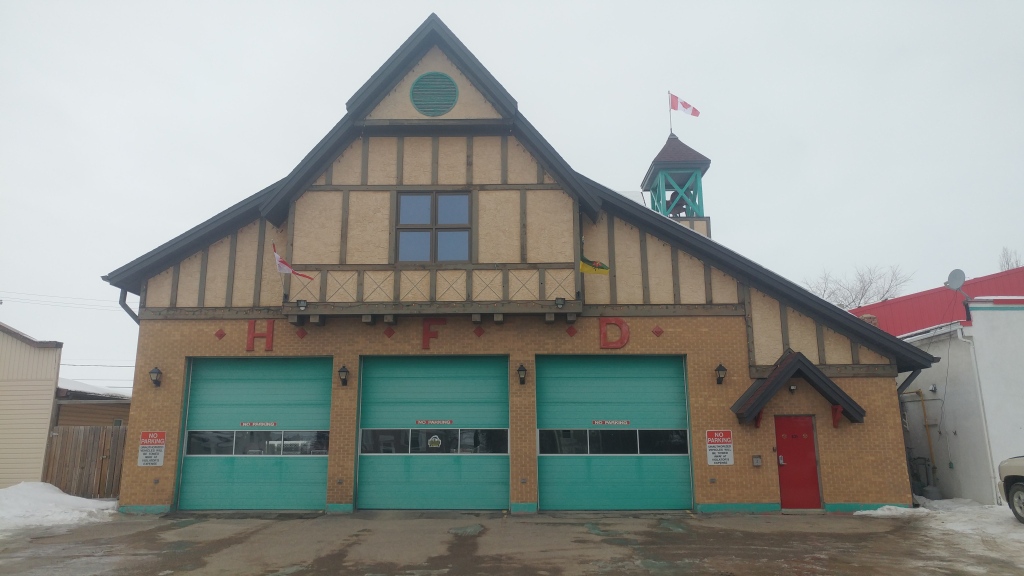
Mutual Aid
Although there didn’t seem to be any record of any mutual aid agreement, on September 7, 1916 Humboldt used the C.N. Railway to ship their fire equipment to Bruno to fight a fire that destroyed five businesses including, L. Kellerman’s Feed Store, Dr. Barry and F.W. Hargarten’s Drug Store, Henry Berger’s General Store, F.Hornisch’s Pool Room and Bowling Alley, P. and S. Schwinghammer’s Lumber and Implement Co. These losses were nearly $20,000. On July 12, 1917 a serious fire destroyed the Palace Livery Stables and an adjacent building on Livingston Street in Humboldt. Men from a circus in town that day helped fight the fire by having the elephants help carry the water.
On December 2, 1961, 23 delegates gathered to discuss final plans for the stablishment of the Humboldt and District Fire Protection Organization. Along with the Humboldt Fire Department, Watson, St.Gregor, Englefeld, LeRoy, Bruno and Lake Lenore intended to donate a percentage of their property tax income to purchase a pumper that could be used in each of the fire departments in this area. These plans took nearly three years to complete and a rural truck was purchased. On October, 1986, an official motion to form a Mutual Aid Agreement, the Town of Humboldt went into an agreement under Bylaw No. 16/86 headed by Mayor Matt Breker to form mutual aid between, the Town of Humboldt, the Village of Muenster, the Village of St. Gregor, the R.M. of Bayne #371, the R.M. of Humboldt #370, the R.M. of Wolverine #340 and the Village of Lake Lenore. Even though this agreement has gone over some bumps in the road it still stands today.
Fire Fighting Equipment and Training Apparatus
- 1907 The first Fire Hall was purchased with a 25 horsepower gasoline powered pump, hoses and ladders and a team of horses to get the equipment to the fire scene.
- 1930 International Harvester Fire truck was purchased to replace the horse drawn equipment (I am not certain if this truck was brand new?)
- 1946 a brand new Chevrolet Maple Leaf 1 Ton with a Bickle Seagrave fire fighting conversion was purchased at a cost of $5,400.It is still used for parades today. The old truck was kept as a backup truck.
- 1949 town council authorised the purchase of Fire Coats and Helmets for all the firemen an estimated cost of $2,000.
- 1950 Mayor Lasken authorised the purchase of Fire phones for the Chief and Deputy Chief and it was decided to have 4 firefighters at the Fire Hall at all times. 1967 Dodge 3ton Rural Truck was purchased that had a 500 gallon water supply.
- 1974 Ford Cab over Thibault Conversion was purchased to be exclusively a “town truck”. It was a combination pumper, tanker and ladder truck. Frank Loroff and Paul Loroff flew to Montreal to drive this truck home.
- 1973 Ford Cab over Thibault conversion 100 foot ladder truck was bought in 1992. It was deemed necessary to have a truck capable of reaching the roof of St. Elizabeth’s Hospital for rescue and fire suppression.
- 1973 GMC Retired Sask. Power Corp. Truck was bought used in about 1982 to be used as a Rescue Unit. It was equipped with a compartment box to carry our air packs and tools and 3 men so we no longer responded with our private vehicles.
- 1983 a plea to town council was made to purchase 24 complete sets of fire fighting Bunker gear with fire fighting helmets and boots to replace the old Jackets and High top Boots. It was approved after the need was proven at a council meeting the cost was $12,000. We got them in early 1984.
- 2001 Freightliner American LeFrance combination tanker pumper truck was purchased under the supervision of Chief Norbert LeBlanc.
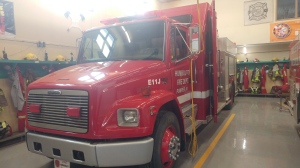
- 2010 Kabota Side by Side was purchased and converted for fire suppression and off road rescue work for snow, mud and otherwise unreachable locations. The required $14,000.00 was raised from fund raising that was shared with R.C.M.P. Humboldt Ambulance Service and the Humboldt Fire Dept. The bulk of the funds were raised from our Emergency Service Ball which has been a joint effort for many years.
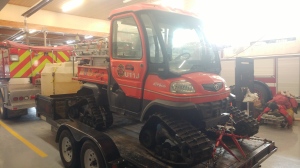
- 2012 Rosenbauer Ladder Combination Truck was purchased brand new. It required some renovations to our Fire Hall to make it fit! The cost of this truck was $578,000.00. That’s a lot of Volkswagons. 2013 Ram 1500 Pickup was bought as a Fire Chief’s truck that was fitted for grass fire application and rescue. It was purchased for $25,000.00.

- 2014 Ram 1500 Pickup was bought as a Deputy Fire Chief’s truck that was almost an exact twin to the Chief’s truck. This truck proved to have great value as it provided a second response truck in many situations over the last few years. It was purchased for $25,000.00.
- 2014 3000 Gallon tanker truck. Formatted with a 2000 gallon portable tank, and a fire pump as well. This truck has been invaluable in the mutual aid of the 2019 and 2020 rail car fires near Guernsey.
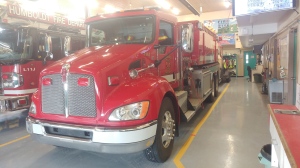
- 2017 we purchased a 2012 Rosenbauer Rescue Truck. It was a Twin to the Ladder Truck in appearance with a whole different job description. This truck was bought for a fraction of the cost of the new replacement value. It was a total of $402,579.00.

- A few of the training obstacles/devices and dummies crafted by some of our talented members of HFD. This practical training equipment helps to give a real-life feel to our training, while being within a safe work environment.
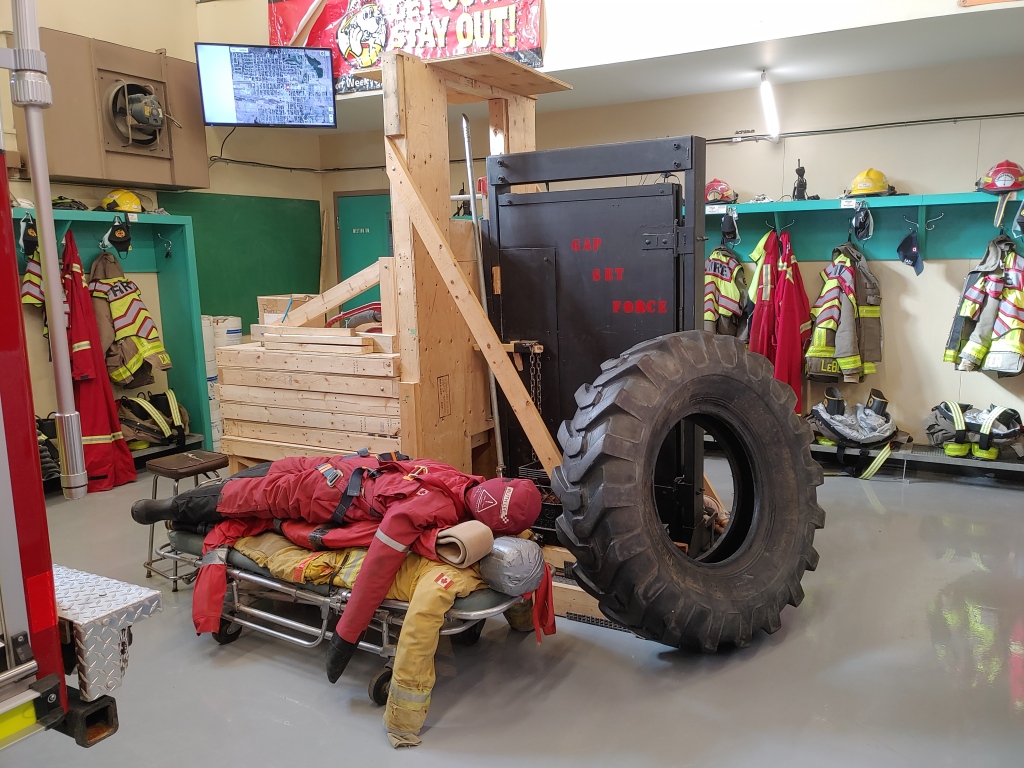
- 2020 we purchased a 2020 Acres pump truck, built over a Freightliner chassis. This 1250 GPM Waterous pump truck was purchased to replace the 2001 Frieghtliner Pumper that had a 19 year stint as HFD’s E11J(or 209 to some of our seasoned vets)
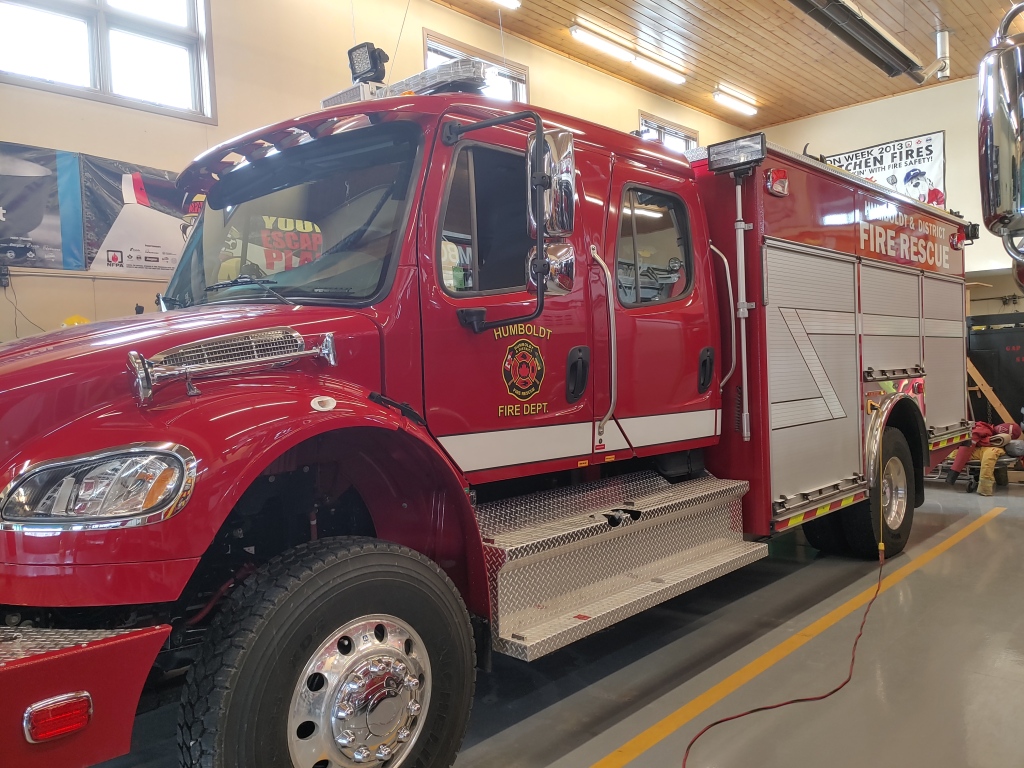
- We could all look at these numbers, and think we should have everything covered, but the truth of the matter is, our training is what gives us the feeling of security and safety. With our Training that we can make the educated decision if we should go in or stay out! Yes, we have to focus on playing to win because if we lose someone gets hurt, no question about it. “Train to Win”
Communications

I am guessing that the original fire bell is the one that is still hanging inside the fire hall today. I know for sure that it did hang in the first town hall/ fire hall. It was used to sound the fire alarm to call the firefighters to duty.
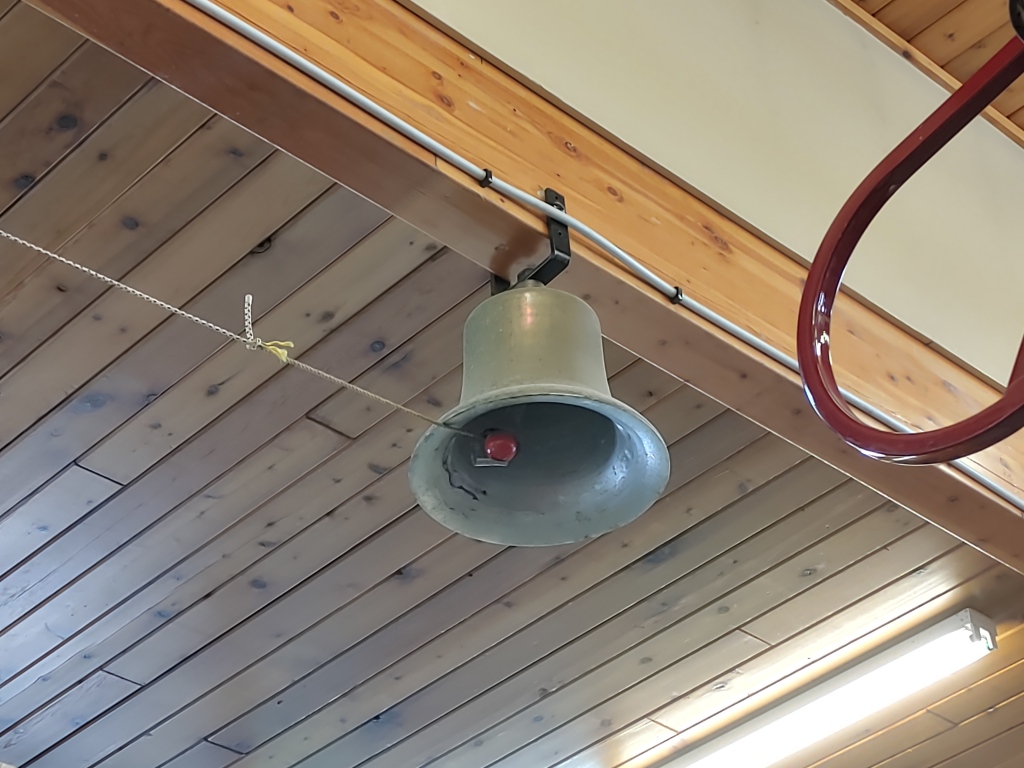
A new electric siren was built into an enclosure on top of the hose drying tower at the new fire hall built in 1963. It was activated by a telephone system that consisted of a fire phone in about 15 fire fighter’s homes. When the call was answered and it was recognized that help was needed the black button on the phone was pushed and the central alarm would sound calling the firefighters to the fire hall when they were any from home, at their regular jobs, etc. It is still being used today as a noon whistle and as a general alarm warning of any disaster that is threatening the city. It is also hooked up to the fire detection system in the Fire Hall itself.

As the Town grew in size the alarm was not always being heard by all the firefighters so a VHS Radio system was purchased to call all the members. This was a big improvement as it tied the individual firefighters together with two-way communication. The times were changing and there were fewer and fewer firefighters’ wives left at home during the work day so A1 Answering service was hired to answer the calls and dispatch the fire calls. In about 2000 the 9-1-1 system was formulated and Medcom in Saskatoon, who also dispatched MD Ambulance and the Saskatoon Fire Dept, was hired to do our dispatching. This eliminated the need for everyone to carry the heavy radios around 24-7. And small pagers were used to call out the firefighters.
Today (2018) we are using a P25 Radio system tied together with the 9-1-1 system and are dispatched from Prince Albert with recorded time marked technology to log our times and status before, after and during the fire call. We have communications with Ambulance, Police, Fire, and Mutual Aid with these radios and still have VHS system in place to communicate with Stars, CNR Railway, and between fellow firefighters for use on the fire grounds.
Fire fighters are called to active duty through an app on their personal cell phones today. The message is sent from 9-1-1 to every firefighter. The message has information about the nature of the call, and can provide mappable directions to the call as well. This app also gives location information of all fire fighters in an almost real-time strategy. The same app is installed on tablets that are mounted in a majority of our trucks. This allows a more streamlined approach to keeping track of personnel, equipment and the trucks themselves.
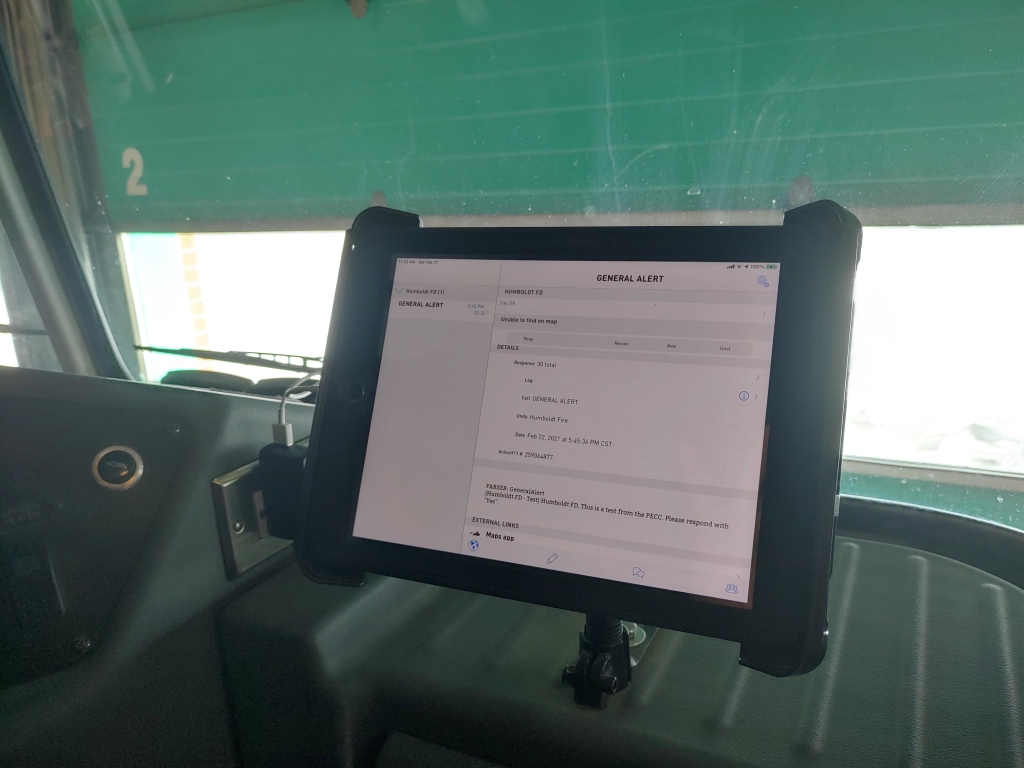
Community Involvement
Fire Fighters Rodeos
The P.C.S. Lanigan Fire Fighter’s Rodeo has been very good for us as a neighbouring department. We have been using this as a test of our skills and to sharpen the skill level of our firefighters. We have attended almost every year by sending off our junior most members to compete. Unlike the Olympics, we train our newest members instead of sending a completely polished team to win a prize. We win by getting the new member to learn skills, meet other firefighters, and interact with other departments in the area. We are always proud of the team performances and the skills that they learn along the way. The sharing of knowledge and the little tricks learnt are a huge benefit for everyone, even for those that didn’t attend the competition.
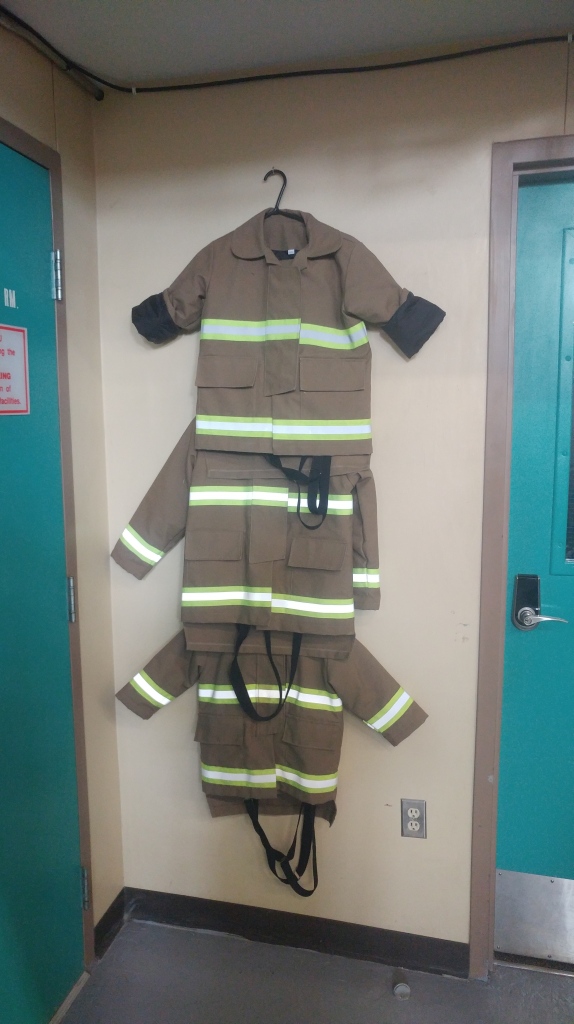
Public Education
Public education and talking to people is done on a daily basis. We may never know how much we help the community when we do public education, but we do know that by educating people about fire safety and fire preplanning, we have helped in reducing fires and fire related injuries and death. Every time we teach a group we learn something new ourselves. This sharing with the schools, seniors’ complex, group homes, and individuals helps sharpen everyone’s sense of self preservation. Again, we can’t measure that success.
Firemen’s Ball
Through the history of our fire department and other departments in our country the firemen’s ball is a fun way to meet the firefighters, acknowledge their needs, and help support them in their efforts. We must thank the community for supporting us at these events, insuring them that the funds raised have always gone to much needed causes. One of the best attended was the first ball that was held in the Humboldt Uniplex. It was the first time dance shoes hit the brand new dance floor and everyone came out to see the new building. In years to follow, it became the policeman’s ball, and now it has been
organized by the Humboldt Emergency Services Event including police, fire, and ambulance personal.
Baby Sitting Courses
We have assisted in many babysitting courses over the years teaching fire safety and first aid. Most of these courses were lead by the Humboldt Jaycettes. They would ask us to be guest presenters. We would tell of our experiences of fire fighting to the very attentive students, this helped produce some very well informed babysitters. These are very gratifying courses and we get the feeling of great accomplishment when we realized that we have helped make a difference though this awareness program. We have to teach the students that parents are entrusting the babysitters with the most
important items in their lives, their children.
PARTY Program
The P.A.R.T.Y. (Prevent Alcohol and Risk-Related Trauma in Youth) Program is a one-day injury awareness and prevention program for youth age 15 and older. Developed in 1986 at Sunnybrook Health Sciences Centre in Ontario, this program is a vital component of the growing community effort to reduce death and injury in alcohol, drug, and risk-related crashes and incidents. The program allows the students the experience of hearing and seeing the struggles of the people who lived through the events
and the rehabilitation process. These are people are not actors, they are the people telling what they had to deal with as the results of an avoidable incident. This program proves to be life saving because of the knowledge that it shares and we are proud to be a part of it. The P.A.R.T.Y. Program was introduced to Humboldt through Safe Communities Humboldt and Area. Check out their website and see the all the
other efforts that they are involved with in our area.
HERO Program
Humboldt Emergency Relief Organization, was started after a fire practise when, Gerald Buchacher, Ian Laroque, Mike Teather, Francis Kunz, Dale Becker, and Norbert LeBlanc got together and discussed a plan to help out the people in need in our community. It was to aid people who needed to get special treatments not available at the local hospitals and would result in unexpected expenses. After several meetings it was realized that there was an emergency relief fund that was started earlier, to help out
when baby Cameron Bernhard needed heart surgery at Toronto’s Sick Children’s Hospital. Allan and Debbie Bernhard were approached and were excited to hear of the project. They rolled their leftover funds into the new program and joined the board of directors of the new H.E.R.O. Fund. It was teamed up the R.C.M.P., Humboldt Ambulance and the Fire Department with representatives from each to gather funds from our community in readiness of anyone in needs. H.E.R.O. has in fact helped many
people already and is also is responsible for helping form team work between our emergency services.
Halloween Patrols
Halloween had lost its meaning many years ago. Somewhere along the way it became a holiday of vandalism and destruction. Many years ago we joined forces with the Humboldt R.C.M.P., Humboldt Ambulance Service, and the Town of Humboldt staff to keep more watchful eyes on the community on Halloween night. We may have spoiled the nights for some of the culprits, but I like to believe we also kept them safe from themselves, as we had seen accidents and acts of destruction that ended up poorly
even though they were planned to be the best prank ever.
Our Open House Program
We are always excited about showing off our gear, equipment and our fire hall during our open house events. They have always been very well attended by the community. It gives everyone a chance for some hands on demonstrations, public education, and a chance to see us on a personal level.
Unfortunately, when we meet on a professional level we could be meeting on the worst day of your life. We understand that we could always be a reminder of that day and it could make it impossible for us to talk together again. We always hope that we leave every scene showing that we care and have tried our best to make the outcome as good as possible for what we had to work with.
Public Safety
When public safety is ever at risk, we are always ready to give a helping hand. Where else can you find a twenty- seven man team that can come together in just minutes any time day, or night, to offer assistance in a case of emergency aid or public safety? We come together to do jobs like fireworks standby, Jaycees Demolition Derby, lost or missing persons, children and sometimes pets. We carry a wide variety of knowledge as we have so many people in so many walks of life in our community.
Humboldt Ambulance
I, Joe Dutchak, was the first member of the fire dept. to serve double duty with the Ambulance Service back in 1980. Since then we have had many members do the same: Les Hill, Ted Bay, Roger Nordick, Daryl Sill, Trevor Lowey, and Todd Gessner to name a few. I am convinced that these dual service commitments helped sew the two teams together. The ambulance service has grown to the point where it is now filled by all full-time positions so having dual service personal is impossible. We do help them in coverage when they have all their resources tied up, then our First Responders will respond to the calls to offer our assistance.
I am sorry I make it sound like we are totally self-sufficient, but that is not always the case. The Humboldt Ambulance Service responds to our fire calls to offer a watchful eye and to keep us safe from heat exhaustion, hypothermia, smoke inhalation, chemical spills, fall injuries, dehydration, exhaustion and the list goes on. I don’t know how to express how grateful, we are, for protecting us while we can get distracted by helping others.
WE RAISE OUR HELMETS TO THE STAFF OF HUMBOLDT AMBULANCE SERVICE
The Humboldt Fire Department in 2019 – Catherine Harrison
The HFD has evolved with the needs of the community over the last 112 years. The
department now has two full-time staff members; Chief Mike Kwasnica and Deputy
Chief Darrell Wickenhauser, and over 25 paid-on-call members. In 1907, firefighters were called to duty by a tower bell, whereas now their communication system is linked to the 911 service in Prince Albert and uses cell phone and GPS technology.
Their participation in programs like P.A.R.T.Y (Prevent Alcohol and Risk-related Trauma inYouth), H.E.R.O (Humboldt Emergency Relief Organization), babysitter training and
other public safety and support initiatives demonstrates their commitment to serving the community. For those little (or not so little!) citizens who dream of growing up to be
firefighters, the HFD is always willing to show off their trucks and equipment and to share their knowledge and experience. – 2019, Catherine Harrison as part of Fire Prevention week exhibit in the Humboldt Museum.
